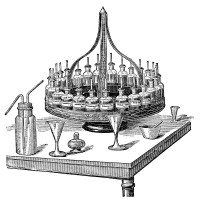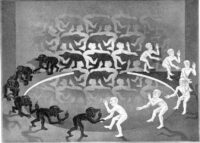 My granddaughter, aged seven, and I were watching an animated movie about a curious fairy who is told by her Fairy Master not tamper with Pixie Dust. She does, of course, and an accident caused by one of her experiments wreaks havoc with the Fairy Village.
My granddaughter, aged seven, and I were watching an animated movie about a curious fairy who is told by her Fairy Master not tamper with Pixie Dust. She does, of course, and an accident caused by one of her experiments wreaks havoc with the Fairy Village.
As we usually do, we talked about the movie, and after picking her up at school the other day she asked me exactly what “tamper” means. “Well,” I said, “tampering is experimenting with combining or changing things without being sure what will happen. Like when that fairy fooled around with Pixie Dust not knowing what the new Pixie Dust would do.” “You mean like discovering she could make pink Pixie Dust?” she asked. “Yes,” I replied, “exactly. Remember when we talked about how a chemist mixes different things to make new combinations? It’s just like that. People tamper with stuff all the time, and sometimes what they discover is good and sometimes bad. They have to know what they are doing. And,” I added sagely, ” some things are dangerous and should not be tampered with at all. Understand?” “Papa” she paused, “You tamper with words.”
She was, of course, correct. Words and language are one of our first forms of “media” and as such people tamper with them endlessly. Language skill is concentrated in the brain’s left hemisphere. Our brain hemispheres, while innately cooperative, also compete for attention, and in our word-oriented society it’s no surprise that the left hemisphere has become dominant. With a penchant for dividing and fragmenting the experience of the world into bits and pieces, naming each of them, and then using those names to explore and tamper, our left hemisphere successfully convinces us that objective reality exists, even though we must use our subjective experience of self to confirm it. This paradox has produced bushel’s-full of philosophers.
The tendency to tamper is not limited to people. Playfulness in young animals can be seen as tampering or experimenting with the nature of experience. Thus both play and tampering are connected with curiosity and the quest for forms of understanding which support survival. Eventually, the outcome of these activities become “what is known” and habits and behaviors reflect subsequent certainty of action. The world becomes more predictable, and cause and effect reliable instruments of satisfying desire.
Through language, and particularly through the use of written language which allows for the widest possible distribution of knowledge, human culture relies on making things as predictable as possible, even though the complexity of existence renders our efforts only partially successful. Though at the sub-atomic level only probabilities pertain, the scale of daily life appears almost mechanical in the reliability of its operation. Convinced we can accurately predict the future, we tamper – sometimes through computer modeling, and sometimes fairy-like, through uncertain experiments. Our vision, unfortunately, is too often short-sighted and negative long-term effects of our tampering arise; convinced it is the source of all wisdom, our left hemisphere then continues to tamper.
Our right brain hemisphere does not tamper and knows differently; it does not divide and conquer, but seeks unity and connection. Its language is that of intuition, resonance and relationship, feelings its guide to survival. We can sense its longing and its powerful message; accordingly, our survival depends not just upon tampering, but attention to the wordless wisdom of the heart.





Be First to Comment